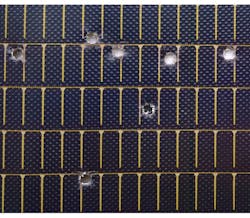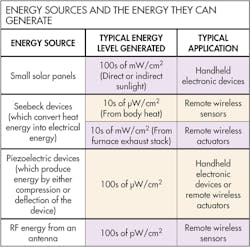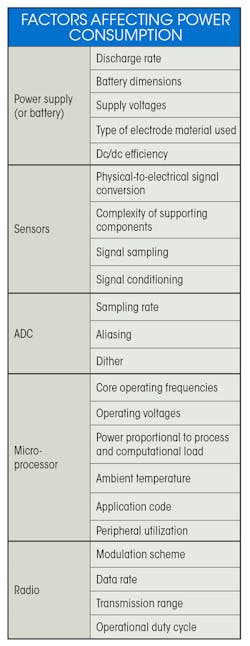There are many predictions about the IoT and how many connected devices will be around in the future. But without a standard measurement of what an IoT device is, predictions can be hard and it can be easy to let hype take over. This article will look at a new infographic and what is happening in the market to differentiate hype from reality.
Psikick.com, a company that offers sensing without a battery, noticed a trend of shrinking IoT predictions across multiple companies. Its infographic “Why are IoT Expectations Shrinking?” shows predictions from IBM in 2012 stating there will be 1 trillion IoT devices by 2015. In 2017 CISCO predicted that 50 billion devices would be connected by 2020. Finally, this year GSMA predicted there would be 25 billion IoT devices by 2025.
I was quick to dismiss this, as many companies throw around numbers expecting to hone them as the prediction gets closer. The only prediction that seem to stick was Moore’s Law, and that was arguably because the industry was using it as a benchmark. Additionally, even Moore’s Law has shifted over time.
Military will often carry thin film for its weight-to-output ratio. However, in the case of explosions, shrapnel, or being shot, this panel can continue to generate power.
When it comes to connected devices, it can be hard to track how many exists. A smartphone could be considered dozens of connected sensors, or one connected device. Any company could strap some sensors onto its legacy equipment and connect it to a laptop. Without a standard definition of what a unit of a connected device is you could see a range of numbers that could technically all be correct.
But the infographic brought up a real concern. As you could have guessed, the company that makes self-powered sensing solutions claims the shrinking predictions are due to batteries. As some devices are pushed to the edge and remote applications can save labor costs by reducing trips to check on a device, when maintenance is needed (not assumed) and what parts and tools are needed before showing up on site. These are just a few reason designers are looking at batteries.
This can be concerning, as batteries are some of the most expensive means of powering a device. Consider the cost of disposable batteries. The current kWh taken from the grid is about $.12, while alkaline batteries range from $68 to $406 per KWh. Nickel-based and lead-acid batteries get closer at about $20 to $8 per kWh. Even with the extra charging power of a lithium batteries, the cost can still get about $1 to $4 per kWh, according to BatteryUniversity.com.
Battery technology is getting better. Unfortunately, research breakthroughs are often years until they make it to market, if ever. Despite this here are some promising research that might help with concerns about the IoT and batteries.
The Spoondrift Spotter operates from a moored or free-drifting position to remotely measure ocean waves, position, and surface currents. Each unit features a waterproof hull, a solar panel array, a rechargeable Li-ion battery, and two-way wireless communications.
Lithium-Oxygen and FeF3
Researchers agree that one of the most promising possibilities for future battery technology is the lithium-air (or lithium-oxygen) battery, which could provide three times as much power for a given weight as today’s leading technology, lithium-ion batteries. But tests of various approaches to creating such batteries have produced conflicting and confusing results, as well as controversies over how to explain them. For more information, check out “Study Untangles Problems with Li Ion Batteries.”
In addition, a team of scientists at Brookhaven National Laboratory has found a way to boost the energy density of lithium-ion batteries, which could lead to longer-lasting batteries and expand the use of wind and solar energy. The team, which also includes scientists at the University of Maryland and the U.S. Army Research Lab, has developed a cathode material that could triple the energy density of lithium-ion battery electrodes.
“Lithium-ion batteries consist of an anode and a cathode,” says Xiulin Fan, a lead scientist on the team. “And cathode materials are always the bottleneck for further improving the energy density of lithium-ion batteries.”
The researchers synthesized a new cathode material, a modified form of iron trifluoride (FeF3), which is composed of iron and fluorine—inexpensive and environmentally benign elements that are known to have inherently higher capacities than traditional cathode materials. Materials normally used in lithium-ion batteries are based on intercalation chemistry; while efficient, it only transfers a single electron, thus limiting the cathode. Compounds such as FeF3, however, can transfer several electrons through a more complex reaction mechanism known as a conversion reaction.
Despite FeF3’s potential to increase cathode capacity, the compound has not worked well in lithium-ion batteries in the past due to three complications with its conversion reaction: poor energy efficiency (hysteresis), a slow reaction rate, and side reactions that can degrade its cycling life. For more information on FeF3 read “New Cathode Materials Triples Energy Storage Lithium Ion Batteries.”
IPS solar-powered parking meters provide municipalities with valuable real-time data and revenue streams. Use of an industrial-grade Li-ion battery provides a highly efficient and economical solution that operates for up to 20 years to minimize long-term maintenance costs.
Environmental Batteries
The environment is an increasing concern, and some research is going into batteries that are easier to recycle, less toxic, and potentially able to store more energy. Lithium-Ion batteries have high energy density that is possible to power cars and equipment. However, much of the sensors and wearables of the IoT don’t require this same high energy density or voltage as an electric vehicle.
There are aluminum-ion batteries being developed to reduce toxins and increase the batteries’ value to recyclers. Aluminum is valuable to recycle and, during use, reduces the chance of thermal runaway. The voltage is said to be low, but offering an easy-to-recycle battery and replacing alkaline batteries would make a large difference in terms of e-waste. Batteries being developed may someday be used in laptops and cellphones, but for now aluminum-ion are more likely to replace AA and AAA battery applications. However, there is no date of when this technology might be seen in the consumer market.
Glucose bio-batteries would take environmentally friendly batteries a step farther. Machine Design last reported on this in 2015, but it doesn’t appear to have hit the market yet. Y-H Percival Zhang, Ph.D. at Virginia Tech created a prototype power bank with an output of 5 V and a current of 1 A. The first application of the metal-free power bank will be to charge cellular phones.
What’s unique about these numbers is that they are from one device containing about 30 grams of sugar that would have enough energy to charge the average smartphone from four to five times. In experiments, a maltodextrin solution was used to cause an enzyme cascade. By using multiple enzymes, a biochemical reaction in the form of an electron flow occurs. This type of bio-battery provides a sustainable, environmentally friendly battery.
“A polysaccharide, which is more of a starch consisting of sugar, is capable of converting this starch into 24 electrons from a single glucose molecule,” said Zhang. “The enzymes are designed to slowly release the energy from the sugars. Experimental batteries started with an output of only 1 mW/cm^2 in the lab.
“We have quickly redesigned them to produce 3 mW/cm^2, and there is a lot of room to improve,” he added. “Sony has mentioned having sugar batteries capable of up to 10 mW/cm^2.”
The research from Virginia Tech uses 13 enzymes containing a 15% weigh/volume mix of a maltodextrin solution with a density of 596 Ah kg −1 , which is one magnitude higher than lithium. As Zhang noted, “It is possible to start experimenting with hybrids and different proteins to alter properties to increase the scope of the applications of this technology.” For more information check out “What’s Going On with Electronic Waste.”
Energy Harvesting
With all the concerns over batteries, some companies are focused on harvesting energy rather than using batteries. This can work in remote applications if real-time operation isn’t important. If you use a small photovoltaic to directly power a sensor and send data, there can be interruptions due to shadows or nighttime. This leads to a hybrid solution, but there is still a battery that will eventually expire.
In factories that have proper lighting, photovoltaics would be ideal. As long as the lights are on, an IoT device has a power source. Unless the equipment operates in the dark, this might be a good solution. There are a few tradeoffs between photovoltaic cells. Mono- and poly-crystalline panels are more efficient, meaning a device will need less surface area to operate. But these types of panels operate in a limited wavelength, which might not work well in unnatural or indirect lighting.
Photovoltaic films can offer a wide wavelength that may be better for unnatural light. The trade-off here is that films are not as efficient, so a device will require a larger surface area. Also, the cost per Watt is much higher. Films can cost $10 to $15 per Watt, as opposed to $3 or $6 per watt for a silicon panel with similar power output.
While lithium batteries have shown to be $1 to $4 per kWh, it will be hard to compare the cost directly as a solar panel can last 20 years or more. This presents a larger upfront cost but, depending on the amount of energy consumed, a solar panel may be an overall cheaper solution. For more information on the types of photovoltaics and how they work, read “What’s the Difference Between Solar Panels?”
Application requirements may dictate certain size and shape constraints for the PV panel, which could impact your ability to utilize an off-the-shelf solution. Custom-designed PV panels may be required based on the recommended voltage, requirements for custom coatings, and specialized mounting requirements.
The total daily estimated voltage output capacity of a PV panel is determined by its surface area and its efficiency. Monocrystalline cells typically operate at 19% efficiency, producing about 0.12 W per square inch (0.019 W per square centimeter). Back contact monocrystalline cells made by SunPower, LG, and others are capable of more than 22%. They achieve this efficiency gain by moving all or most of the contact points (which appear as thin silver lines on the solar panel) to the back, freeing up more surface area for energy production on the front of the cells.
Scaling the IIoT
The burgeoning IIoT is fueling the explosive growth of remote wireless connectivity, causing rising demand for solar/Li-ion hybrids that can bring reliable long-term power supply solutions to remote locations and extreme environments.
Scaling the IoT will require many sensors, and installing and maintaining them individually isn’t feasible. Going forward it will be important to find solutions that achieve a lower total cost of ownership, as it makes economic sense to specify a power management solution that supports robust remote wireless connectivity while minimizing future maintenance expenses.
Finally, I felt compelled to conclude with a reminder to think for yourself. While the infographic mentioned at the start of this article did address an important concern, the numbers presented a top-down approach and simple math that I do not agree with. The graphic stated if there was a 1 trillion sensor world, there would be 273,972,603 battery replacements every day; assuming a best-case battery with a 10-year lifetime.
1 trillion batteries/(365 days × 10 years) = 273,972,603
Using a more realistic number of three years, the number then exceeds 913 million. That’s more than the population of Australia working an eight-hour day devoted to changing batteries. First this would not have to happen in one day. Second, many IoT-connected devices like phones, cars, laptop, and watches may have a power source that doesn’t require a battery.
Finally, from “Forecast is Bright for Solar/Li-Ion Battery Hybrids Powering Remote Sensors,” contributing writers Jeff Crystal and Sol Jacobs (from a battery and solar panel company, respectively) mention that industrial-grade Li-ion batteries are now available that that can deliver up to 20-year battery life with 5,000 full recharge cycles.
Also, keep in mind the life expectancy of the device. Sensor and devices also wear out and need to be replaced. Many designers are designing the battery life of remote or difficult-to-access devices to last its entire lifecycle. So take a second to think for yourself: Stats and numbers can be good indicators, but sometimes they don’t tell the whole story. Double-check your supporting data to ensure higher accuracies.


















